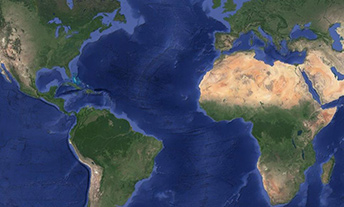
Rocky Raybell
NASA Citizen Scientist
Contents
- Education
- What motivated you to be a NASA citizen scientist?
- What do you do when you’re not doing science with NASA? Tell us about your job and your hobbies.
- What have you discovered or learned as a NASA citizen scientist?
- Which peer-reviewed research publications have you contributed to through your citizen science work?
- What have you learned about the process of science from your time on NASA citizen science projects?
- Additional Links
- Where are they from?
Education
- Mountlake Terrace Senior High (now High School) in Mountlake Terrace, WA
- Divers Institute of Technology, Seattle, WA
Rocky is retired from various careers, including: hospital lab assistant, orchard worker, commercial diver, miner, gold dredger, computer technician, roustabout, tugboat crew, switchboard operator, and founder of a non-profit.
His photos contributed to a major citizen science discovery.
What motivated you to be a NASA citizen scientist?
I was contacted by Dr. Toshi Nishimura, who was interested in using my photos for the study they were doing on STEVE (STEVE is an acronym that stands for Strong Thermal Emission Velocity Enhancement). I had posted some pictures on Space Weather, and also put them on my Flickr account. I do a lot of photography.
When Toshi contacted me, I explained what I’d seen. I had good records; all my pictures are time stamped. That was the second STEVE I’d seen. I saw one in 2012. Toshi set up a site for me to upload pictures. His research team used my pictures in conjunction with the satellite data that they had.
NASA’s Goddard Space Flight Center/Genna Duberstein
STEVE is a strange thing, it doesn’t happen with every aurora. Not with strong solar storms. Both events where I saw it, there was nothing particularly unusual happening. I’ve seen stronger auroras with no STEVE. But that night when I saw it, it came up like a fountain of light from behind the hill. It looked like flames coming out the top of the hill.
I’ve seen it a few times. I’ve seen it stretch from one horizon to the other. My son was out there with me the time I got the image of the picket fence in STEVE in 2016 – we were bouncing off the wall at that. When it jumped to the east, it was like a flash – incredibly fast. It shot across and disappeared on the eastern horizon. We’d watched it for 45 minutes. That was a lot of fun.
What do you do when you’re not doing science with NASA? Tell us about your job and your hobbies.
Right now, it’s the camera. I’ve figured out how to hack inexpensive cameras to take long exposures. I end up toasting the sensors on the cameras eventually. Now I have a nice Nikon and a better lens for the night sky.
I also take care of the hummers (hummingbirds) when they’re here. We have a lot of hummers. I’ve gone through eight pounds of sugar a day to feed them. Once I left a door open and a little later, I started hearing thumping and stuff – we had well over 100 hummers inside the house. It took a long time to get them out of the house. They all made it.
What have you discovered or learned as a NASA citizen scientist?
NASA’s a good thing, I know that! I’m a fan of NASA. I grew up watching all that stuff from Sputnik all the way on through. I was born in ‘49 and have been watching NASA my whole life. It’s been quite a ride.
There’s always something going on, as long as you’ve got a sky.

Rocky Raybell
NASA Citizen Scientist
There’s so much going on that we don’t see. Once I started spending time outside at night, I was up all night and sleeping during the day for quite a while. There’s always something going on, as long as you’ve got a sky. I’ve had quite a few Disney nights out there, with one thing after another. I’ve seen a Chinese rocket body burning up on re-entry, I’ve seen the International Space Station coming over the hill looking like a bus all lit up by the Sun, I’ve seen Iridium satellites, all kinds of stuff. And things I still haven’t figured out, things that no one’s been able to tell me what they are.
Which peer-reviewed research publications have you contributed to through your citizen science work?
My photographs contributed to the research presented in, “Magnetospheric Signatures of STEVE: Implications for the Magnetospheric Energy Source and Interhemispheric Conjugacy,” which was published in Geophysical Research Letters in 2019.
There were other people who got images of STEVE. Up in Canada and in the northern part of the midwest. I understand what they were doing, matching up the satellite images with pictures like mine taken from the ground.
I wasn’t so much involved in what Toshi and his team were doing, but I was able to follow it. The satellite data was a big deal. These satellites just happened to be in the right place at the right time.
What have you learned about the process of science from your time on NASA citizen science projects?
I have a general idea of how science works. I’m always trying to understand what’s going on and why. There’s a lot of ‘let me try this, let me try that’ in my life. Deep-sea diving involves a lot of physics and gave me a good foundation for understanding what was going on around me. Working at the hospital, being around Dr. Tom Marchioro,a pioneer in the transplant business,also helped me gain an understanding of science. He was a mentor who kind of took me under his wing. I was lucky to have known him.
Additional Links
Where are they from?
Planetary science is a global profession.





























